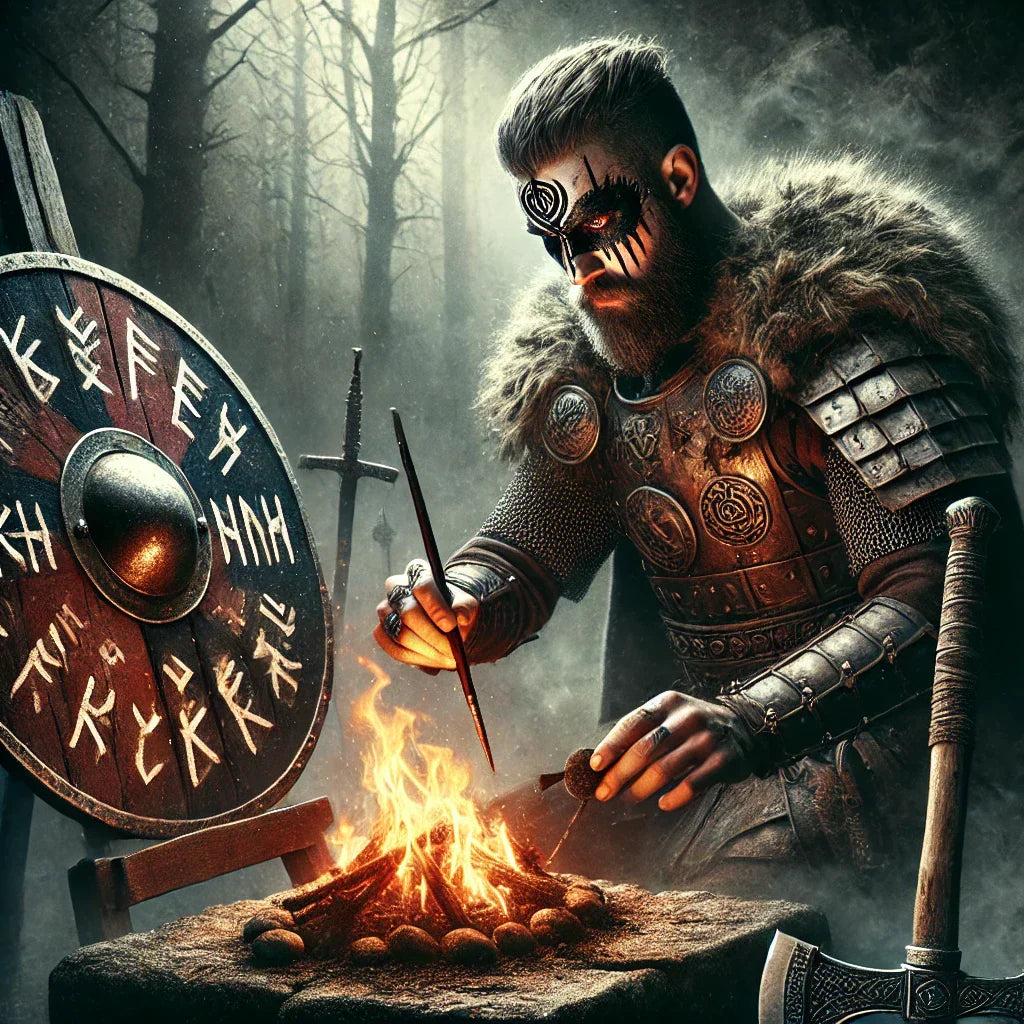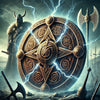How the Helm of Awe Was Used in Viking Rituals and Warfare

How the Helm of Awe Was Used in Viking Rituals and Warfare
The Helm of Awe, or Ægishjálmur in Old Norse, was more than just a Viking symbol—it was believed to hold real power. Vikings didn’t just use weapons and brute strength in battle; they also relied on magic, runes, and sacred symbols to give them an edge. The Helm of Awe was one of the most feared and respected symbols in Norse culture, said to provide protection, instill fear in enemies, and strengthen the warrior who bore it. It wasn’t just drawn or carved onto objects—it was deeply woven into Viking rituals, war preparations, and spiritual beliefs. The Vikings saw symbols not as mere decorations but as tools that could influence fate and alter reality. For them, the Helm of Awe wasn’t just an artistic design; it was a force that could make the difference between life and death. The belief in such symbols was so strong that warriors would enter battle convinced that they were shielded by divine forces, giving them a psychological advantage over their enemies. But how exactly did the Vikings use the Helm of Awe in their daily lives, in warfare, and in their sacred rituals? Let’s take a deeper look at how this legendary Norse symbol played a crucial role in Viking culture.
The Helm of Awe in Viking Rituals: A Symbol of Protection and Power
In Viking society, rituals were an essential part of life. The Norse people didn’t just fight battles with swords and axes—they also fought with their minds, their spirits, and their beliefs. The Helm of Awe was often used in rituals meant to bring strength, courage, and protection. Before battle, warriors would paint or carve the symbol onto their foreheads, shields, or armor, believing it would create an invisible shield around them, making them impervious to enemy attacks. This practice wasn’t just superstition; it was rooted in a deep belief that symbols carried real energy, a concept seen throughout Norse mythology. The Vikings were highly spiritual and believed that the gods, spirits, and fate all played a role in their success or failure. The Helm of Awe was thought to be one of the most powerful protective symbols because it didn’t just defend physically—it also worked mentally, giving warriors unshakable confidence. If a warrior believed they were invincible, they would fight without fear, making them even more dangerous to their enemies.
The Helm of Awe was also used in spiritual ceremonies, especially among those who sought Odin’s wisdom and guidance. Odin, the Allfather, was not just the god of war—he was also the god of wisdom, knowledge, and magic. Many Viking rituals involved seeking Odin’s favor before a battle, and the Helm of Awe was often invoked during these ceremonies. Some Viking warriors, particularly berserkers, would enter a trance-like state before combat, a process known as "going berserk." They believed that the Helm of Awe helped them achieve this fearless state by driving out doubt and filling them with unstoppable rage and determination. This symbol wasn’t just for warriors, though. It was also used in daily life to bring protection against evil spirits, bad luck, and unseen dangers. Viking households sometimes had the symbol carved onto doors or personal belongings to keep harm away, similar to how they used the Tree of Life as a symbol of balance and protection.
How the Helm of Awe Was Used in Viking Warfare
Viking battles were brutal, chaotic, and often unpredictable. Warriors needed more than just skill with a sword—they needed absolute confidence, the belief that they could not be beaten. The Helm of Awe played a crucial role in this psychological warfare. Many warriors would carve or paint the symbol onto their shields, helmets, and even their bodies, believing that its magical energy would strike fear into their enemies while protecting them from harm. In Norse culture, fearlessness in battle was one of the highest virtues a warrior could have. A Viking who feared death was weak, but a warrior who believed they were protected by powerful magic was unstoppable. The Helm of Awe wasn’t just a personal symbol; it was a weapon of the mind, a way to make an enemy hesitate, and in battle, hesitation could mean death.
The design of the Helm of Awe itself was meant to reflect its power. It features eight arms radiating from a center point, resembling a spiked wheel or sunburst. Each arm was believed to channel energy outward, forming a protective barrier around the wearer. This magical shield was thought to deflect attacks, confuse enemies, and make the warrior appear larger and more fearsome. The belief in its power was so strong that some warriors refused to go into battle without first marking the symbol onto themselves or their weapons. Just as Viking rings and amulets carried sacred runes for protection and strength, the Helm of Awe was a symbol that warriors trusted to guard them in the heat of battle. If you're interested in other Viking symbols used in personal protection, you can read about them in our article on Top 5 Viking Rings and Their Norse Symbols.
The Helm of Awe in Modern Viking Culture
Even though the Viking Age ended long ago, the Helm of Awe remains one of the most well-known and respected Norse symbols. Today, it is seen in Viking tattoos, jewelry, artwork, and modern Viking-inspired designs. Many people who wear the symbol today see it as a representation of personal strength, resilience, and protection. It serves as a reminder to stay strong in the face of adversity, much like how the Vikings used it as a symbol of courage in battle. While it was once used to strike fear into enemies, it is now used as a personal emblem of fearlessness and confidence. People from all walks of life—whether they have Viking ancestry or simply admire Norse culture—wear the Helm of Awe as a way to stay connected to the warrior spirit.
Unlike in Viking times, when the symbol was painted or carved onto shields, modern Norse enthusiasts often wear the Helm of Awe as jewelry. Many believe that having the symbol close to them provides a sense of security, motivation, and courage. If you want to carry this legendary emblem with you, explore our Helm of Awe Viking Jewelry Collection for pieces inspired by ancient Norse traditions.
Conclusion
The Helm of Awe was not just a Viking symbol—it was a source of power, protection, and psychological strength. From pre-battle rituals to spiritual ceremonies, it played an essential role in Viking life. Warriors believed it made them invincible, while others used it in daily life for safety and luck. Whether you see it as a symbol of protection, mental resilience, or Norse heritage, the Helm of Awe continues to inspire and empower people today. The Vikings may have vanished, but their wisdom and belief in symbols like this one still live on.




